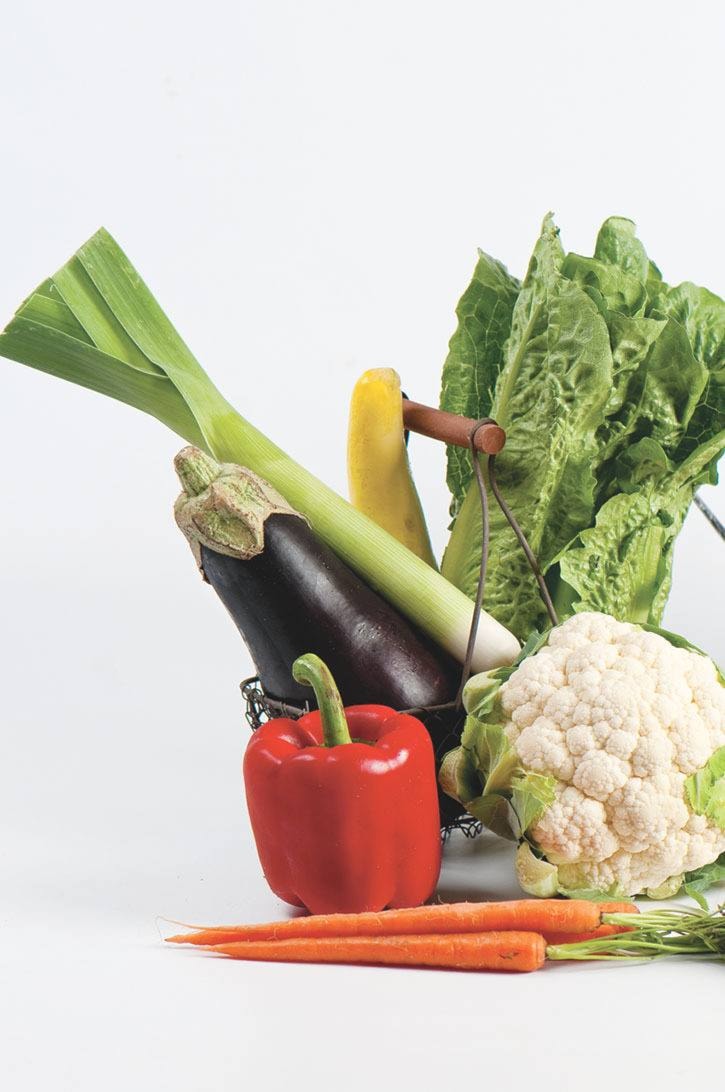The warm May spring weather has returned which naturally pulls people outdoors to spend their time.
Flowers and buds are popping out, along with nutritious greens.
The garden brings colour to our world and these colours from veggies and fruits offer healthful benefits to our body when eaten.
The rainbow of colour provides a variety of different phytochemicals and antioxidants.
Phytochemicals are natural plant substances that protect the plants from predators, such as insects and fungi. These plant chemicals give the plant its colour and when eaten by humans, phytochemicals can protect cells from breakdown.
Orange, red, purple, white, green, yellow, blue all offer different phytochemicals with healthful benefits.
Antioxidants are natural elements found in foods. They protect body cells from damage caused by harmful molecules called free radicals.
Some free radicals are formed from normal body processes when the body uses oxygen. Others come from cigarette smoke and other pollutants in the air. Antioxidants protect body cells from the damage caused by free radicals.
For an example of the way free radicals can damage cells, think of the body as a car. The metal of the car will rust over time when it mixes with oxygen. When treated with a protective coating, the rust can be prevented from damaging the car so quickly.
Similarly, eating plant foods rich in antioxidants daily can help protect your body cells from free radical damage and breakdown.
Vitamin C, vitamin E and selenium are some examples of vitamins and minerals that act as antioxidants in the body. Phytochemicals including flavonoids, polyphenols and carotenoids are compounds found naturally in plants which may also act as antioxidants.
Antioxidants help to keep you healthy and may also help prevent some chronic diseases such as diabetes, heart disease and cancer.
In food, there are many different antioxidants that can be found in appropriate amounts. More does not always mean better. Research and ongoing studies suggests that taking high dose antioxidant supplements in pills and/or powder form may be harmful, since they act more like medicine in the body than nutrients.
Single dose supplements may throw off the balance of nutrients in the body and cause nutrient interactions.
A good variety of food with a well balanced diet has the appropriate level of vitamins, minerals, antioxidants, phytochemicals and other nutrients to keep the immune system strong, protect heart health, maintain blood pressure and weight and prevent degenerative eye diseases.
It is recommended to consult a health-care professional if you are considering taking high dose antioxidants in supplemental form.
Some antioxidants and phytochemicals that are found in food include:
• Vitamin C is found in peppers (red, yellow, green), kiwifruit, strawberries, oranges, papaya, brussels sprouts, broccoli, leafy vegetables, tomatoes, and potatoes.
• Vitamin E is found in: leafy greens, almonds, sunflower seeds, sweet potatoes, peanuts, and avocado.
• Selenium is a mineral that is found in: Brazil nuts, fish, shellfish, meat, poultry, grain products, wheat germ, wheat bran, beans, oat bran and eggs.
• Carotenoids are found in: kale, tomatoes/tomato products, spinach, sweet potato, carrot, leafy vegetables, pumpkin, squash, guava, watermelon, grapefruit. A commonly known carotenoid is beta-carotene.
• Flavonoids are found in: berries (especially dark coloured berries), cherries, red grapes, onions, apples, cocoa, tea (especially green tea).
Including five different colours of vegetables and fruits in your daily diet will offer the variety of phytochemicals and protective elements to help keep the body healthy. Eating fruit at each meal and vegetables at lunch and dinner will help reach this goal of five different colours.
Aim for seven to 10 servings per day of vegetables and fruits in your diet.
Growing a few leafy greens in the garden, balcony or windowsill container can help increase the intake of daily vegetables. Also, buying produce from local suppliers regularly can help support the Alberni Valley economy and your health.
The weekly Farmer’s Market on Saturday morning at Harbour Quay is one way to get your locally grown produce. In addition, purchasing a monthly Good Food Box at Salvation Army for a reasonable cost supports local food programs to help improve your personal intake of colourful fruits and vegetables.
Enjoy the seasonal variety and eat your colours. It will do your body good!
* Sandra Gentleman, is a registered dietitian and co-founder and steward of Canal Beach.
